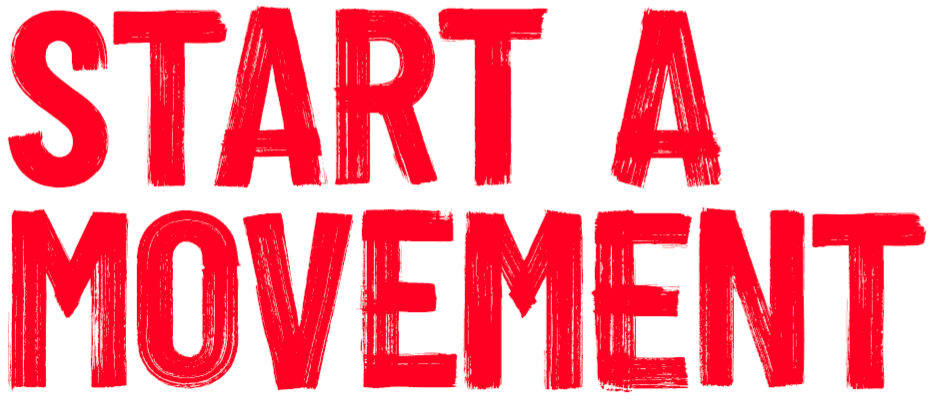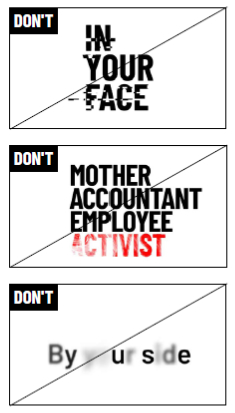Moving image

We recommend also reading our video production guides.
Animation: logo
For video and social media end-frames, we have an animated version of our logo. Make sure you use this version of the logo when creating video content. Don't forget our logo has purpose and works across both 'dissatisfied' and 'demanding' roles.
Animation: typography
In our animations, we move with purpose and confidence. When animating typography, make sure it feels human. Avoid anything that looks too digitised.
Try to:
Move with confidence. To show purpose and to help the viewer read, animate your words one by one
Keep it clear and natural. We want our messaging to stand out and be easily read
When animating paint brush assets, use texture. Shelter Activist should animate as if the letters were being painted onto the screen
Shelter Activist animations should look smooth with fluid motion. They should look imperfectly human and have a stylistic analogue look
Don't use standard animation effects
Avoid things like glitches, fade-ups and blurs. Our typography should animate naturally and have an analogue feel.

For more, read our typography guidelines.
Animation: brush graphics
Our brush is handmade, so when you make it move, it has to feel tangible and real. A bit like you’re painting onto the frame. When animating brush graphics, we keep the style natural, and think of the brush being painted on by hand.
Try to:
Take care when animating multiple brush graphics. They need to look like they're being painted by the same hand
Aim for a smooth animation that has an analogue style/feel. We want to see graphics appear and animate as if painted by an actual brush
Don't use standard animation effects
Avoid things like glitches, fade-ups and blurs. Our brush should animate naturally and have an analogue feel.
Film: art direction
To make sure they're stylistically on-brand, our films should follow our art direction guidance.
Techniques
For film, we mainly focus on four art direction techniques:
Things to think about
When making a film for Shelter, please consider the following:
If you're unsure of anything or need some advice, speak to one of our filmmakers or visit our video production guides.
Interviewing
Make sure you conduct well-researched, carefully structured interviews. Always aim to bring out the interviewee’s personality and the emotional depth of their situation. If you're shooting a case study video, wherever possible, film your characters looking into the camera – this helps the viewer connect with them.
If you're interviewing someone for their professional expertise, shoot on the third – this gives a more neutral, objective impression. Use a short depth of field and a clean background to focus attention on the interviewee.
Make sure critical lens focus is on the subject's eyes.
Editing
Make sure you set the right pace for the emotion of the story. Our edit structure is clear and purposeful – this gives the viewer all the information they need, while telling a compelling story.
B-roll (‘show don’t tell’)

We’re visual storytellers and shoot beautiful sequences to make situations feel emotional and relatable. Always try to:
Show the beauty of the environment, with small details and wide shots
Show familiar, relatable and ‘precious’ moments
Find creative ways to get to the heart of the story
Be mindful of objects that detract from the scene or impact of the narrative
Show people's lives with sensitivity and dignity. Our films don’t invite judgement
Animation techniques
If you need to add text to your video, along with the Shelter logo, take a look at our guidance.
Paint brush assets
These are an important part of our brand. Our guide on brush graphics explains how to use them, and our typography guide show you how to combine them with words.
And see above for using animation to bring our paint brush assets to life.
Music
When you add music to video, try not to use any tracks that are overly emotive. That said, this rule might change, depending on the narrative. Music and sound design should always be well-balanced. It shouldn't detract from the dialogue.
End frames
In most instances, position our logo centre-frame, with the space of the symbol around it.
Call to action
Where there's a call to action, you can move the logo a little to accommodate it. Aim to position your call to action above the logo – the symbol should actively point to it.
Symbol and wordmark
You can use the logo in its two parts on an end frame. For instance, if you'd like to include our strapline or if you're using the symbol on its own for a specific purpose.
End frame examples:
We have a flexible logo system that can be used for end frames.
Question about using our brand in moving images?
Contact the Shelter brand team
